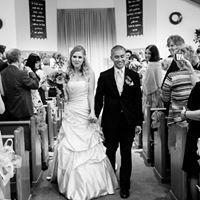I've had luck with sous viding steaks only to bring them up to temperature. But any steaks that require holding for more than a couple hours always dry out and lose a ton of their pinkness. I use Douglas Baldwins tables and have tried sirloin, ribeye, eye of round, etc at 130/131F. I've tried them at 6 hours, 8 hours, and sometimes the much longer 24 hours or more cooks. Ribeyes - of course I only tried at 6 hours once as I was looking for a way to render the fat down a bit more besides applying a lot of high heat. I was trying to get the best of both worlds with this one. The delicious rendered fat of Ribeyes with the perfect medium rare temperature with less chance of human error. The other meats, I was experimenting to see if I can turn leaner, cheaper cuts of meat into something much greater, like many sous vide advocates talk about. I've tried many times, and have never been successful. Like I said, the longer cooks make them lose a ton of their juices, and the meat comes out pale and hardly pink at all, despite being cooked at medium rare. I recently did a side by side comparison of a 8 hour vs 1.5 hour sirloin and the 8 hour was not enjoyable at all. Dried out. The 1.5 was good, but about the tenderness I expect form a traditional cooked sirloin of course. I figured it might be an issue with the microcontroller (Dorkfood DSV) not being calibrated. So I bought a thermapen and pretty much the 3 thermometers including the thermapen I use pretty much agree that the microcontroller is doing a great job (and yes, the bath is circulated). My heating element is one of those Marshalltown immersion bucket heaters. Have any of you had this problem? My only suspicion is that it might be a factor of thickness at this point, but even then, I've tried top sirloin over 1 inch thick and it still comes out dry and pale after 6 hours at 131. I'm not getting this legendary turning cheap cuts into filets with more flavor that I keep hearing about. The only thing I haven't tried is doing a roll/roast. Any advice would be appreciated!


